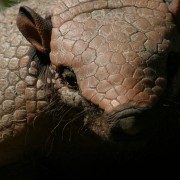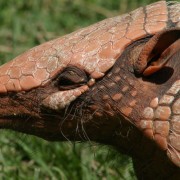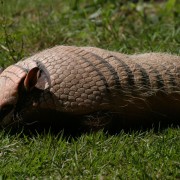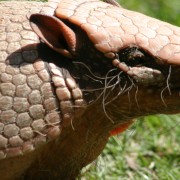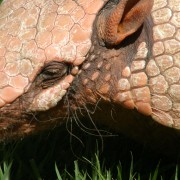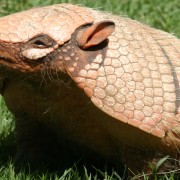Biodiversity
< Back
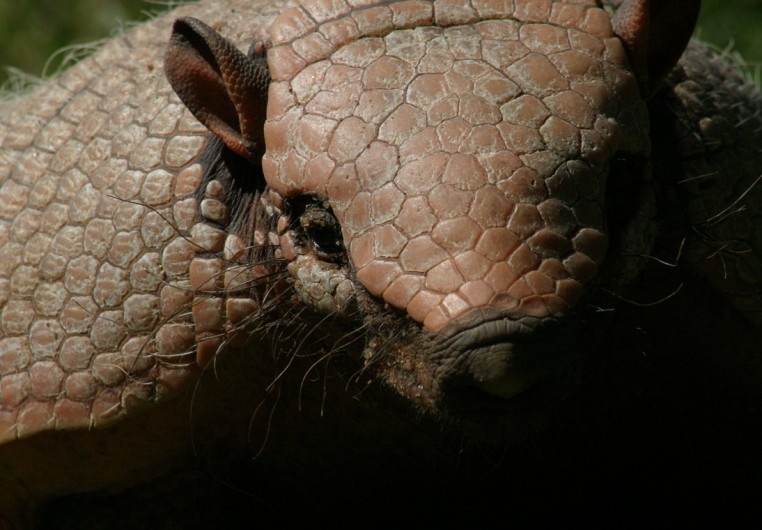
 Six-Banded Armadillo
Euphractus sexcinctus | Linnaeus, 1758
Six-Banded Armadillo
Euphractus sexcinctus | Linnaeus, 1758

PHOTO: Property of Native / Embrapa
Characteristics: Medium-size species, with a brownish color, a shell provided with the sparse fur, with six or eight movable plates and a conical, flat head.
Distribution: It occurs from Suriname to Northern Argentina, in areas of central Brazil savanna, being found in the states of Bahia, Minas Gerais, Goiás, Piauí, Maranhão, and northern São Paulo, to the north of the Tietê Piracicaba rivers.
Habitat: This armadillo lives in fields, savannas, and forest edges.
Habits: It has nocturnal, solitary habits, digging tunnels to hide.
Diet: It feeds on a wide range of plants, such as rice, seeds, orange pulp and sugarcane, ants, beetles, termites, butterfly larvae, crickets, spiders and certain animals, including carcasses.
Breeding: They reach sexual maturity in 1 to 2 years. The gestation period is 60-65 days, and 2-6 pups are born per litter. They are born hairless, toothless, with closed eyes and external auditory canals, malformed ears and a mouth shut off laterally by a membrane, with only one anterior opening that allows the animal to suck.
In the UFRA area: It occurs in native forests, Restored Native Forests and Organic Sugarcane Fields.




